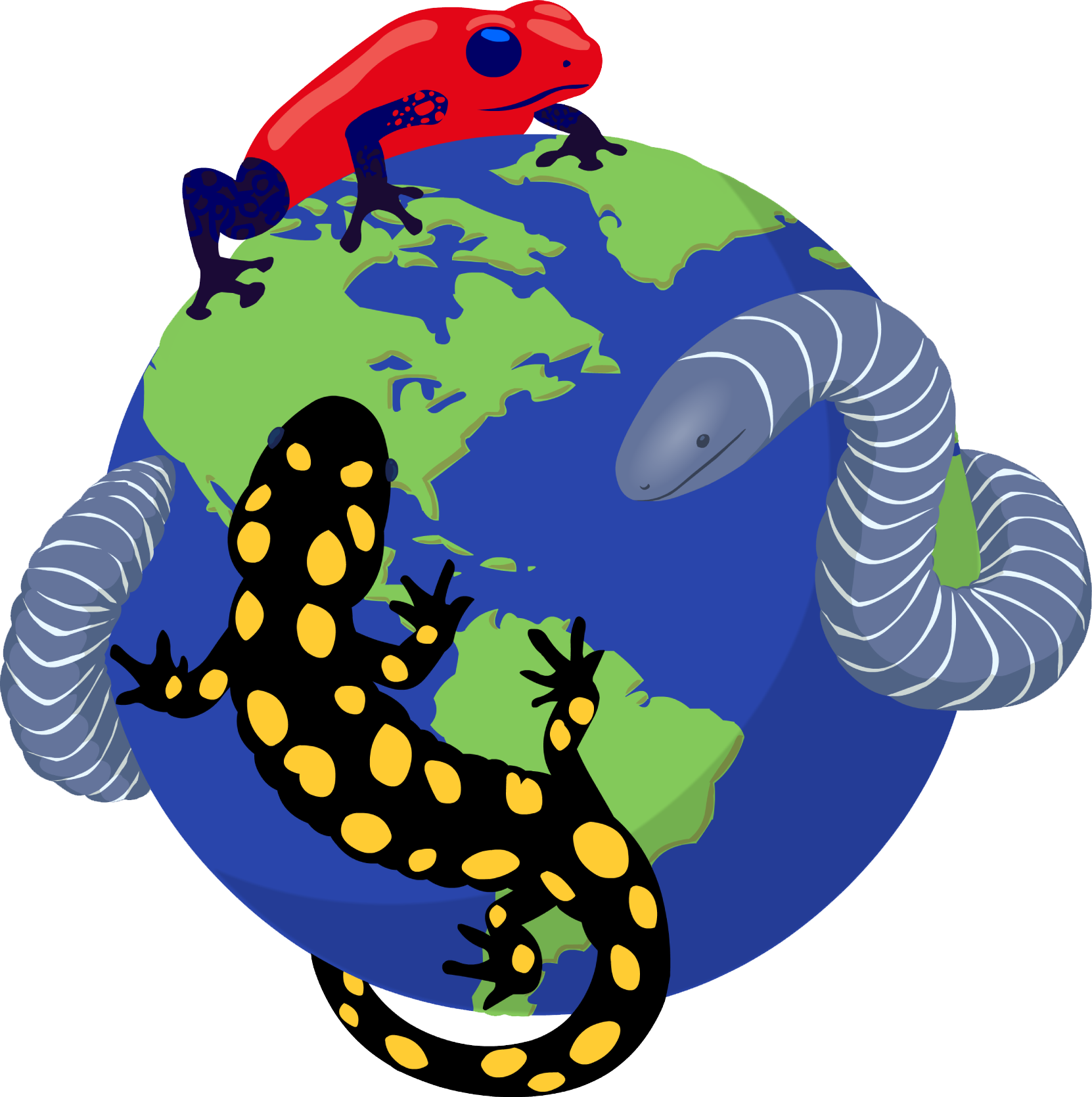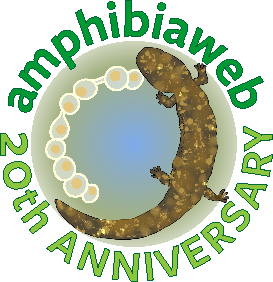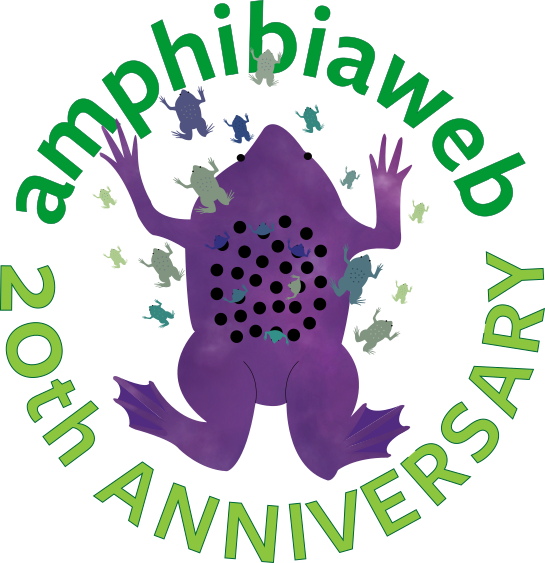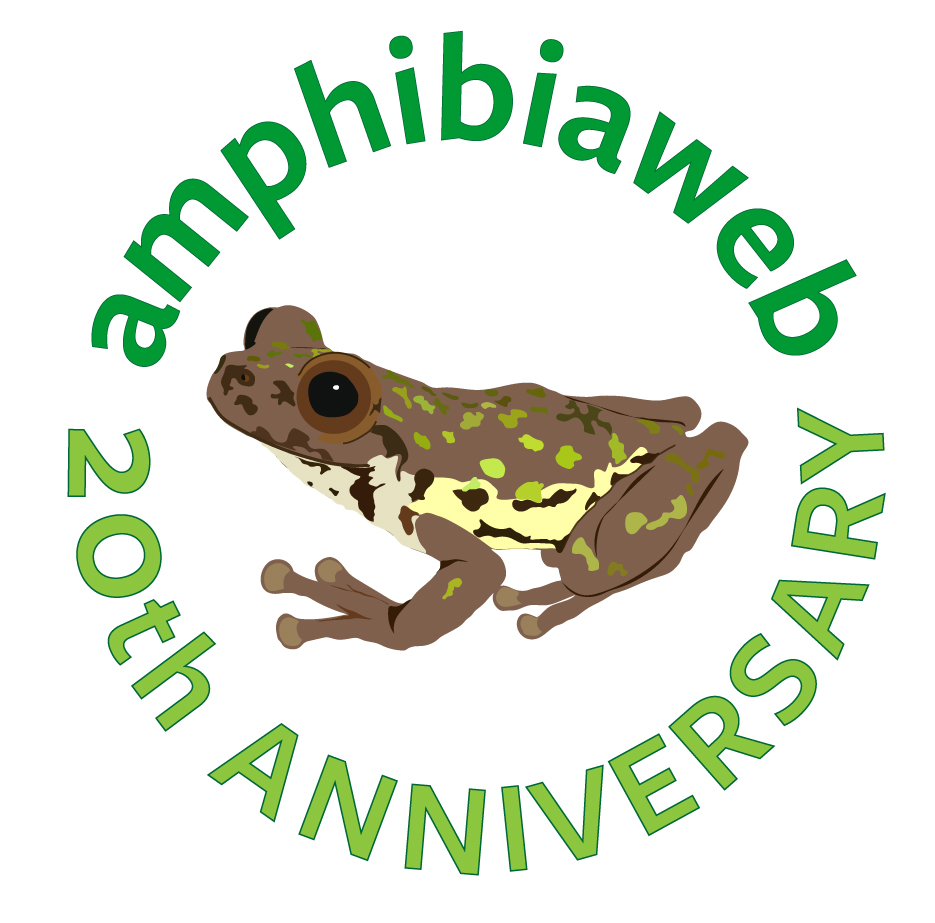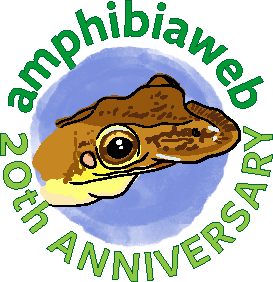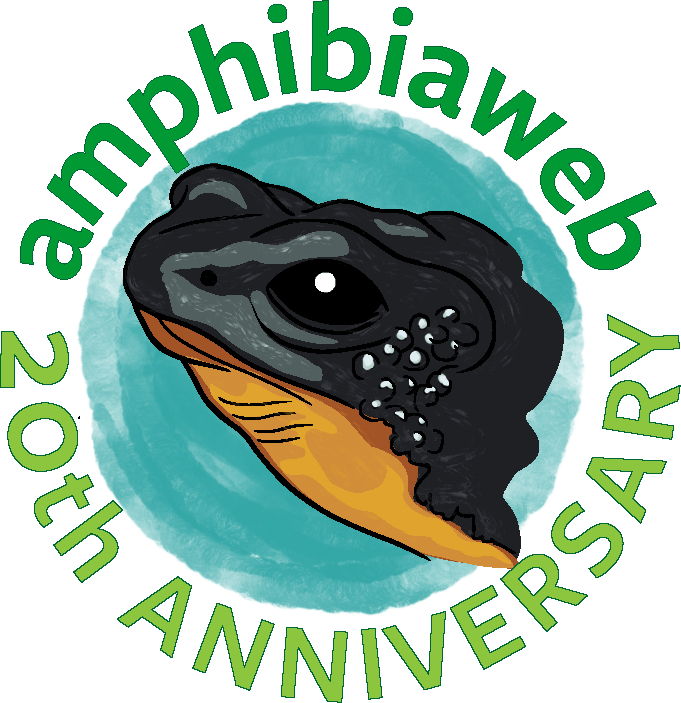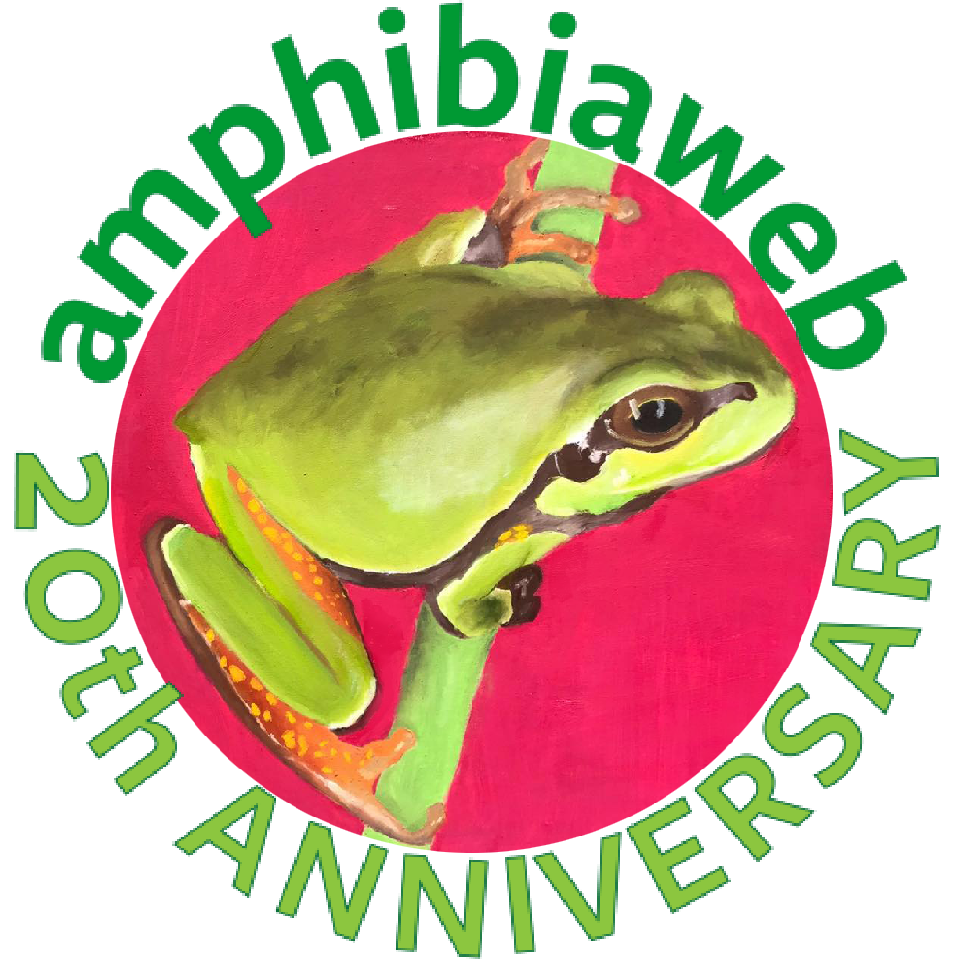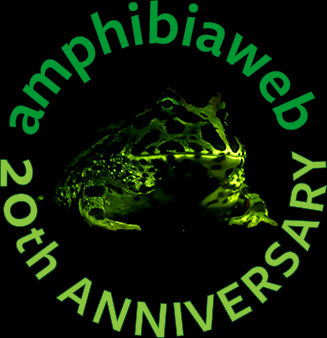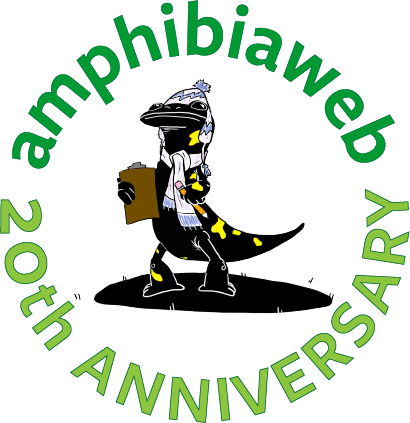Art Your Amphibian!
2020 marked the 20th anniversary of AmphibiaWeb and we wanted to use this as an opportunity to hear from our talented users. Specifically to hear about your favorite amphibian, what makes your research tick, and most of all, to see your talent in action!
We asked for your artwork to grace our 20th Anniversary buttons and boy, did you all deliver. The AmphibiaWeb Team had the delightful challenge of choosing among the wonderful artwork. We are happy to announce the results.
Top Five!: We chose the top five as new the button designs which will be sent to the winners as well as be available for purchase on the AmphibiaWeb Zazzle Store (purchases there support AmphibiaWeb).
Gallery of Submissions: We also honor all the other wonderful entries and how they are meaningful to their creators.
Please enjoy the Art as much as we have!
Top Five #ArtYourAmphibian in 2020!
(alphabetical order)
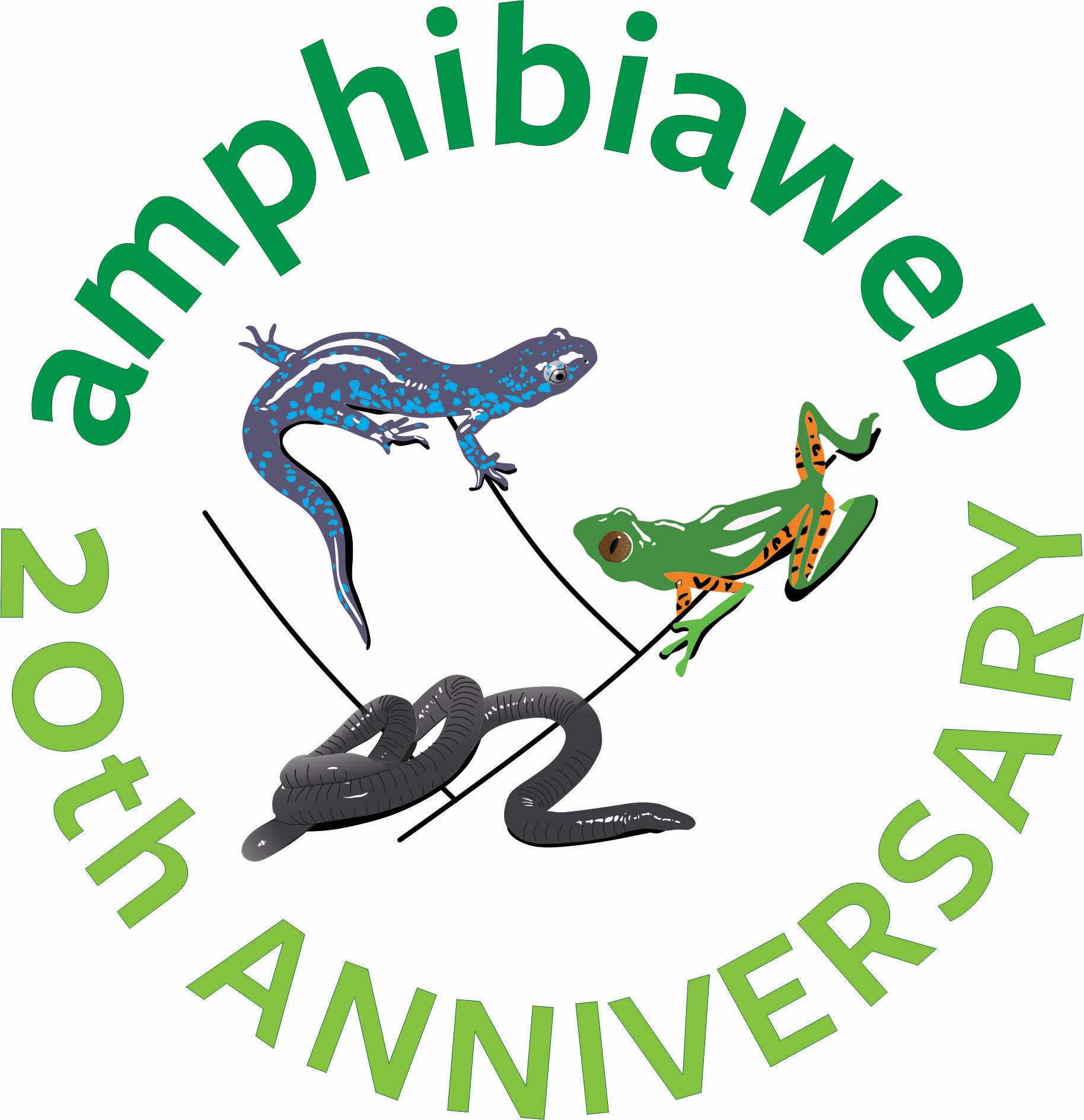
Gabriela Alves Ferreira e Omar Rojas Padilla, Universidade Estadual de Santa Cruz, Master's Candidate
English version: First, we would like to say that it was difficult to choose just one species from each order. We are passionate herpetologists and we see unique beauty in each of the representatives of this beautiful group. As it was not possible to place all amphibian species within the small area of the pin, we decided to appeal to the emotional side. The monkey tree frog (Phytecopus azureus) was one of the first species that I (Gabi) came into contact with when I started working with amphibians, so I have a great affection for this species. The salamander, Ambystoma laterale, with its bluish tones highlighted in brown skin, is the Caudata that we like the most. And, Caecilia thompsoni, due to its unique shape, absence of appendages and its "hidden" life, represents Gymnophiona very well. The design is something simple and seeks to convey the mission of AmphibiaWeb, which in addition to showing relevant information about the life and conservation of each species, also presents taxonomic information about them.
Em português: Primeiramente, gostaríamos de dizer que foi difícil escolher apenas uma espécie de cada ordem. Somos herpetólogos apaixonados e vemos belezas ímpares em cada um dos representantes desse belo grupo. Como não foi possível colocar todas as espécies de anfíbios dentro da pequena área do pin, decidimos apelar para o lado emocional. A rã-macaco (Phytecopus azureus) foi uma das primeiras espécies com as quais eu (Gabi) entrei em contato quando comecei a trabalhar com anfíbios, por isso tenho um grande carinho por essa espécie. A salamandra, Ambystoma laterale, com seus tons azulados destacados na pele marrom, é a Caudata de que mais gostamos. E, Caecilia thompsoni, devido á sua forma única, ausência de apêndices e sua vida "oculta", representa muito bem os Gymnophiona. O desenho é algo simples e que busca transmitir a missão do AmphibiaWeb, que além de mostrar informações relevantes sobre a vida e a conservação de cada espécie, também apresenta informações taxonômicas sobre elas.
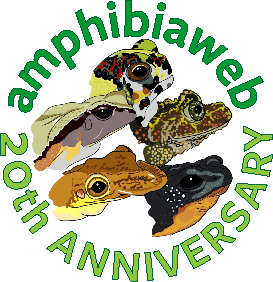
Anne Chambers, University of Texas at Austin, Graduate Student
I wanted to highlight the spectacular morphology of frogs found across the globe. Here, there are representative species from five continents, and I tried to illustrate them in such a way that they mimic old-fashioned portraits of historical figures. (including Atelopus ignescens, Triprion spatulatus, Notaden bennettii, Theloderma corticale, Sclerophrys channingi)Anne Chambers, University of Texas at Austin, Graduate Student
When it comes to infrequently seen, less well-loved, and not as traditionally 'charismatic' amphibians, this quotation by Wallace in The Malay Archipelago comes to mind: "It seems sad that such exquisite creatures should live out their lives and exhibit their charms only in these wild inhospitable regions. This consideration must surely tell us that all living things were not made for man."
The hellbender lives in seldom seen places, tending to their young for months, living out their lives away from people, in quiet solitude. Their biology is fascinating: there is a huge amount of genetic structuring within the species, and their closest relatives are the giant salamanders of Asia.
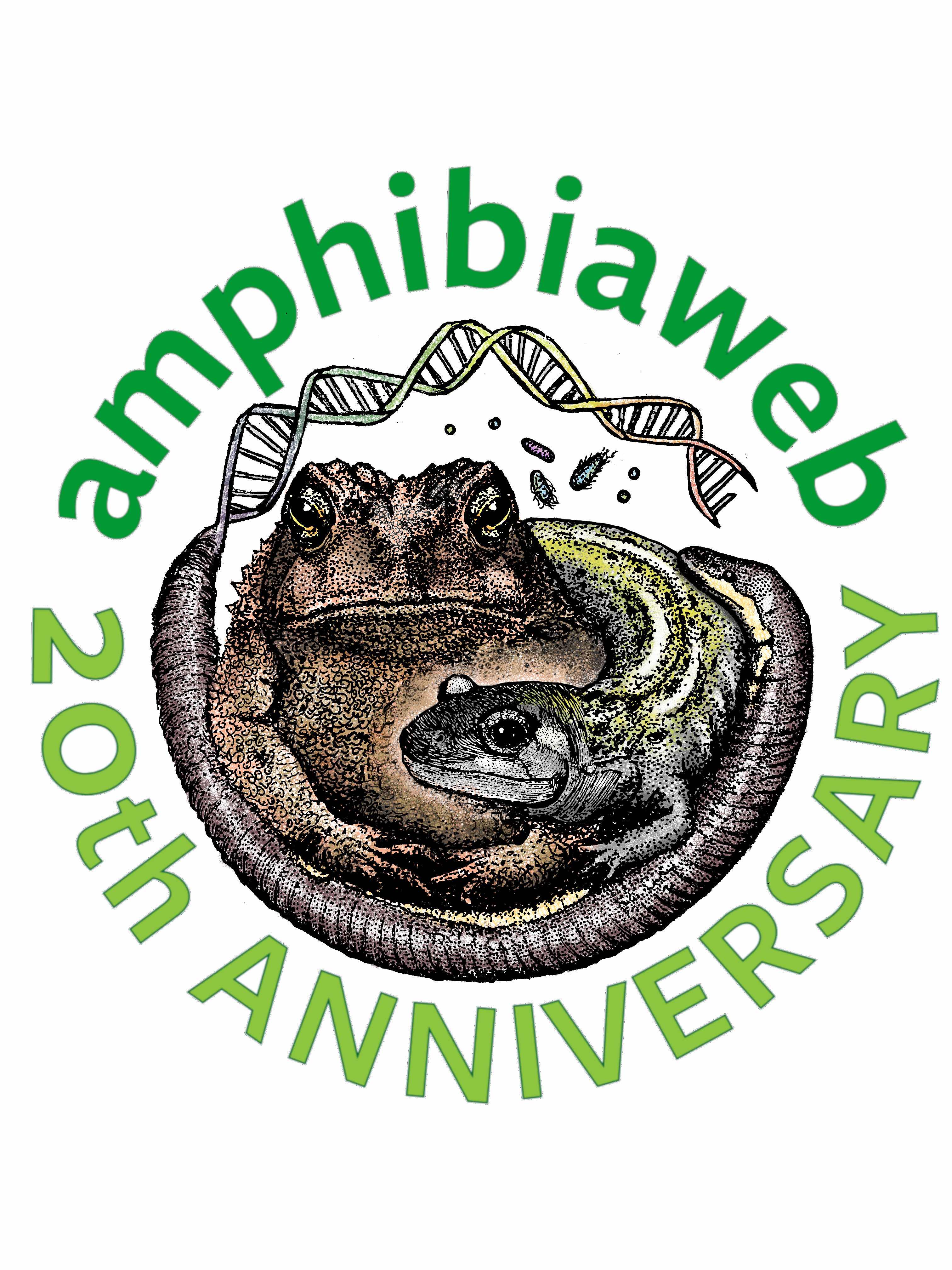
Nina McDonnell, University of Massachusetts, Boston, Research Assistant
This design celebrates amphibian diversity and important developments in our understanding of amphibian biology from the last 20 years. Each of the three species represented comes from a different taxonomic order and region. The American toad (Anaxyrus americanus) is a charismatic anuran from eastern North America. With its stout legs and warty skin, it is one of my favorite species to encounter in the field. American toad tadpoles can aggregate in large groups that carpet pond bottoms or swarm across the surface in mesmerizing shoals. The long-toed salamander (Ambystoma macrodactylum) is native to the Pacific Northwest. In addition to its vibrant and highly variable coloration, this salamander is notable for its startling vocalizations and tail-waving behavior, employed to deter the encroaching predator or probing herpetologist. The third species featured is Ichthyophis glutinosus-- a caecilian from Sri Lanka. Great progress has been made in the classification of caecilians in the past 20 years; however, with many of their mysteries still unsolved, we can look forward to learning more about this fossorial group in the times to come. A DNA double helix and assorted microbes (not to scale) are also incorporated in the design to represent developments in amphibian biology from the past two decades, including revised phylogenies and exciting discoveries about the role of the skin microbiome in amphibian health.Ali North, University of Plymouth & ZSL Institute of Zoology, PhD Candidate
The Suriname toad Pipa pipa is weird and wonderful! Whilst locked indoors amidst the Covid-19 pandemic, I've been reminding myself that there is an amazing natural world out there, even if we can't get out and see it. I've spent some of my spare time researching an A-Z of amphibians from across the globe and I've become fascinated by this species. What a brilliantly peculiar animal. This amazingly camouflaged toad is flat like a pancake and can be found sitting at the bottom of murky streams waiting for its dinner to float past. The toad lacks a tongue, so relies on its long sensory fingers and large mouth to help capture its prey. The most peculiar aspect of the toad however lies within its reproductive cycle. Fertilized eggs are pushed onto the back of the female where the skin grows up and around them, protecting them as they develop. After several months, miniature versions of the toad push up and out of the mothers back, and scurry off into the big wide world. Madness!Gallery of #ArtYourAmphibian Submissions
(alphabetical order)
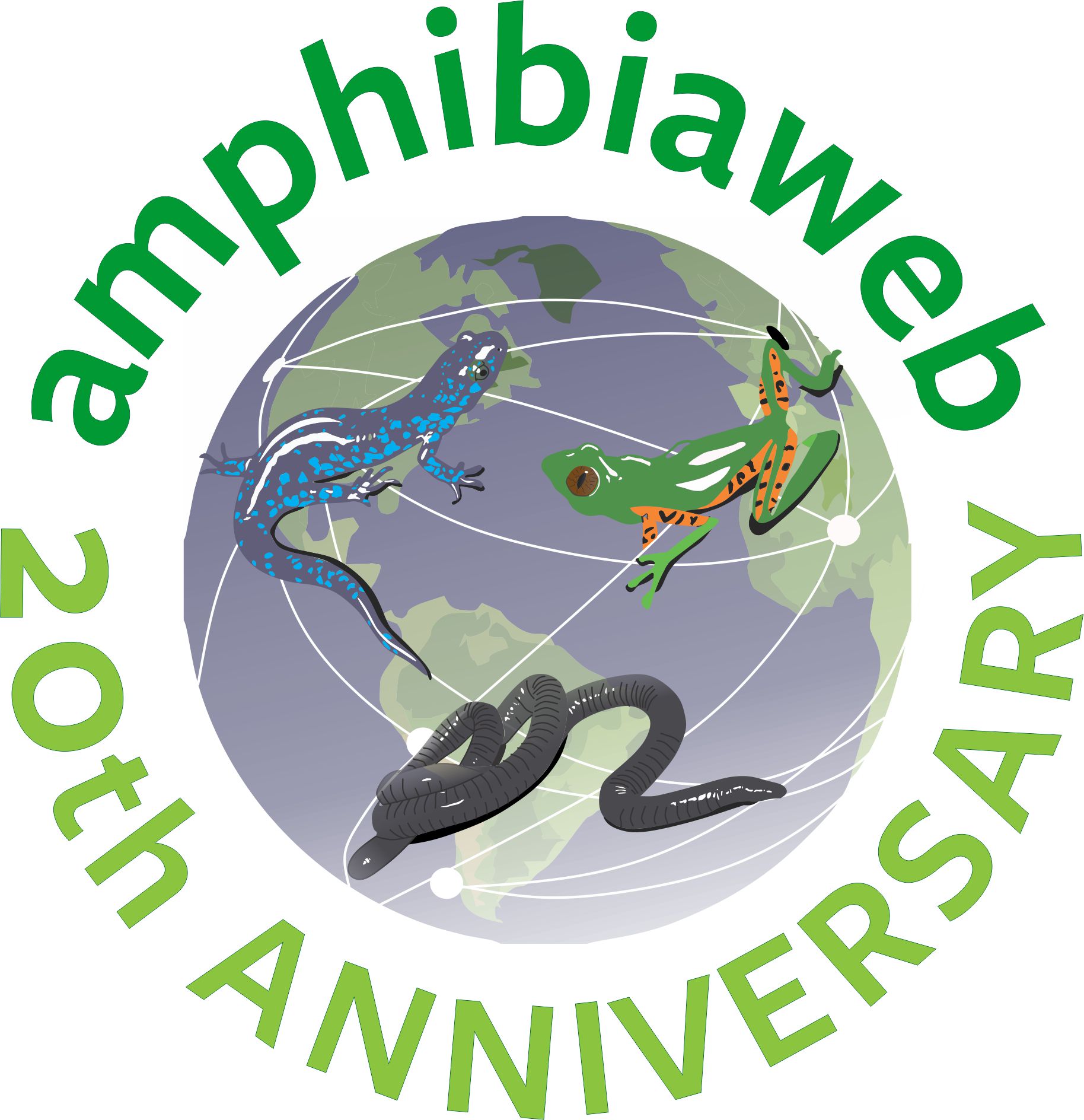
Gabriela Alves Ferreira e Omar Rojas Padilla, Universidade Estadual de Santa Cruz, Master's Candidate
Amphibians have always been animals that make people very fascinated or repelled. We are part of the group fascinated by these animals. Its shapes, colors, behavior, and above all, its diversity enchant us a lot. When thinking about what to draw for the bottom. Our intention was to represent the main thing the site brings: a network of information about amphibians from all over the world. Therefore, we decided to represent the planet connected by connection networks and taking the message of globalization to access to knowledge about this interesting group of animals, and more people are fascinated for this animals.Itzue W. Caviedes-Solis, Lingnan University, Postdoctoral Fellow
Sarcohyla bistincta is a member of the family Hylidae. It is endemic to Mexico, where I am from. It inhabit cloud forest in the most remote and pristine places. It was thought to be one widespread species across the Mexican highlands. However, molecular data uncovered that it was a species complex. I have been working with Sarcohyla for 13 years. My master's degree project was a phylogeny of the genus and I have been working with Hylids ever since. This species is what made me fall in love with tree frog's systematic and evolution. Looking for this species in the wild lead to some of the coolest field work adventures I ever had. Also, I own the most important achievements in my academic career to this group of species. Now I am branching out to work with Rhacophorids, but Sarcohyla bistincta will always have a special place in my heart.Itzue W. Caviedes-Solis, Lingnan University, Postdoctoral Fellow
Sarcohyla thorectes is a member of the family Hylidae. It is endemic to Sierra Madre del Sur, Oaxaca, Mexico, my favorite place in the world. It is one of the few species of Sarcohyla with iridescent spots in the back. They have loud calls and live in cloud forest next to small streams. The specific name is from the Greek θωρηκτες, which means a "warrior armed with a breastplate." This species is indeed a warrior. It was rediscovered in 2013 by Delia et al. and more stable populations have been reported since!Itzue W. Caviedes-Solis, Lingnan University, Postdoctoral Fellow
Liuixalus romeri is an endangered species endemic to Hong Kong. It the most basal lineage of the family Rhacophoridae. Its common name is Romer's tree frog, even though it does not climb, and it does not live in trees. It is resilient and it is recognized as important to help create awareness on amphibian conservation in Hong Kong. Even a string quartet has the frog's name! Liuixalus romeri is one of the main projects in the recently founded Natural History Collection at Lingnan University, Hong Kong.If you want to learn more about our collection, please visit: https://lingnancollection.wixsite.com/naturalhistory
Anne Chambers, University of Texas at Austin, Graduate Student
This toad, native to Australia, has to be one of the cutest and most beautiful toads. It's minuscule, spends most of its life underground, and has brilliant coloration and patterning.Anne Chambers, University of Texas at Austin, Graduate Student
Much of my fieldwork has been in Mexico, and I feel that many endemic amphibians there - such as D. spatulata - do not receive the recognition they deserve. Diaglena spatulata inhabits the Pacific coastal lowlands of Mexico, and is especially distinct in having a bony, protruding head shape only found in a few other species of frogs.Anne Chambers, University of Texas at Austin, Graduate Student
I've always been fascinated by Atelopus; they're such unique-looking toads that are also very much in danger of going extinct. While I think many people have heard of Atelopus, they're usually only aware of the more colorful representatives of the genus, rather than this (perhaps a bit more nondescript) spectacular little toad with a fiery belly.Kyle T David, Auburn University, PhD Candidate
I chose Hyla andersonii because I wanted to paint a native species that could be found in my own backyard. I think there can be a tendency to profile the most charismatic, exotic species while forgetting about local biodiversity. For example, I wasn't even aware Alabama had any tree frogs until I started looking for an art model! Additionally, since Hyla andersonii is a species with declining populations, if we don't start appreciating them now, soon it may be too late!Regina Krohn, University of Calgary, Research Associate
This Amphibiaweb pin design, featuring the grey treefrog, was inspired by an experience during the field season of 2017 at the International Institute of Sustainable Development (IISD)- Experimental Lakes Area in Ontario, where I studied wood frog development. Another researcher and I went out to measure water parameters and cyanobacteria biomass in a small lake, when we noticed this little hitchhiker hiding under the bench seat of or our boat. He slowly left his hiding spot, at that time sporting a pale green outfit with the typical darker grey blotches and bands on his legs. He sat on the side of our bright orange first aid kit for a while, before seeking refuge in the boats hull again. While he bathed in the sun, his colours changed. Every time I looked at him, more and more green spots had appeared. The blotches on his back turned grass green while his legs and rest of the body featured light green patches. It was the first time for me to see a grey treefrog change colour, and I was fascinated by it. This feature definitely makes Hyla versicolor one of my favourite North American frog species, and I tried to capture this moment of colour transition in an acrylic painting.Jennifer Lamb, St. Cloud State University, Assistant Professor
Science has known about biofluorescence in animals for a while, but most of the previous survey work has focused on marine vertebrates or on terrestrial invertebrates, like arthropods. We (myself and co-author, Matt Davis) recently discovered that biofluorescence is widespread across amphibian biodiversity and our work was just published in Scientific Reports. Each of the 32 species of frogs, salamanders, and caecilians we tested fluoresced green to some degree. Interestingly, species that are camouflaged by patterns that help them blend in with leaf litter, like this Cranwell's frog, shine bright green. This could indicate that biofluoresence might be useful in nocturnal surveys for cryptic taxa. There is a lot of excitement in these new discoveries, and it helps drive home the point that there is still a lot to learn about amphibians, how they might perceive their world, and how they might be perceived by other species.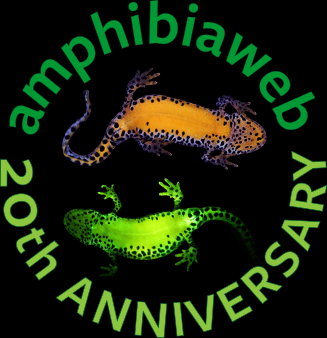 "
"
